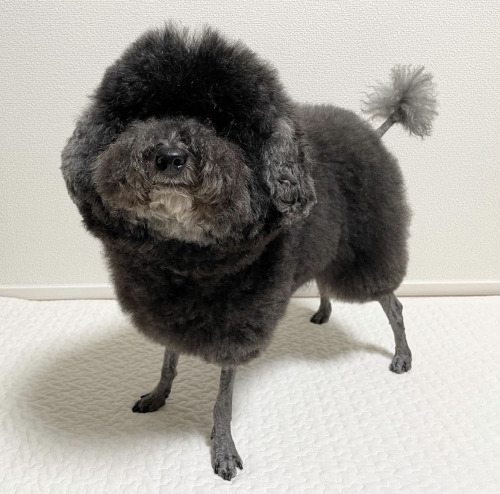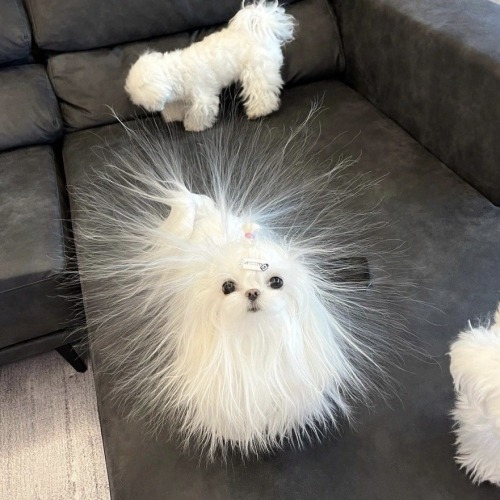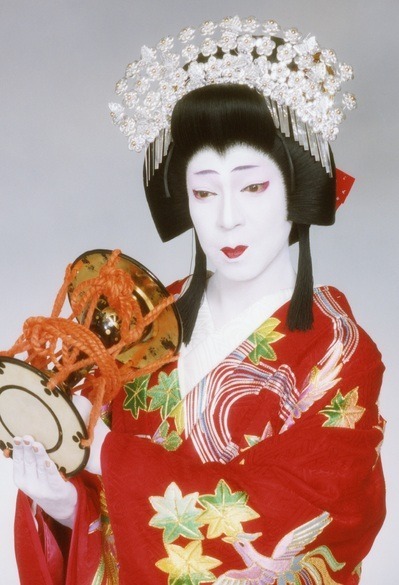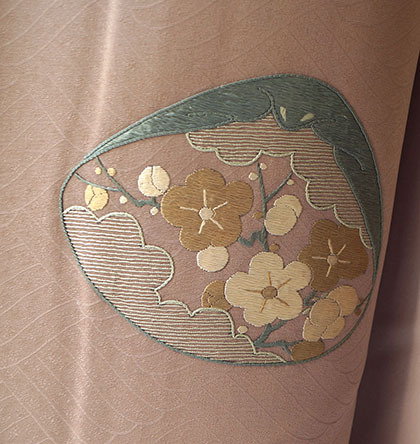Um … Compilation






um … compilation
More Posts from Misscounterfactual and Others




Romantic antique attire perfect for kôyô (autumn leaves viewing season) depicting small birds in turning maples trees.
The black silk shusu obi is matched with a lovely sanpogi (lit. ”stroll outfit”). Those were beautiful kimono featuring mirror designs on skirt flaps and all over patterns. I believe they were worn as fashionable day dress and were briefly in fashion in Kansai (Osaka?) pre wwii.


Clustered Bonnet Mycena inclinata
A day one sloth will remember for a long time..
Source



Hello! i saw your kimono drawing guide, and i have some questions. I saw this art and was wondering about a few things: what is the tied knot& tassel things on the sleeves for? and, what hairstyle is the lady wearing? If you know, please tell me! If you don't know, could it be possible to direct me to someone that might? Thank you for taking the time to answer, if you're able! Have a lovely night/day!
Hi and thank you for your question :) The ukiyoe you are sharing is by Utagawa Kunisada and titled Genji rokujo no hana (源氏六條の花), or "Cherry Blossoms at Genji's Rokujô Mansion". It is part of a three prints set:

It depicts an imaginary scenery from The tale of Genji, and the young lady playing with her pet cat is the princess Onna San no Miya.
Characters are not shown wearing period accurate clothes (from Heian era), but luscious Edo period attires. Because of her rank, the young princess is wearing what Edo princesses would, especially the trademark hairstyle named fukiya 吹輪.
You'll find below a translation from a costume photobook I did a while ago. Note the big bridge style front hairpin, and the drum like one in the back. Princesses from the buke (samurai class) would also have dangling locks called aikyôge (I also found the term okurege), but I am not sure kuge princesses (noble class) wore them too.

There is a whole dispute about this hairstyle, as we are not actually sure it was worn as such by actual princesses. This style may have in fact started as a somehow cliché bunraku/kabuki costume used to depict princesses (think a bit like Western Cinderella-types princess gowns). Nowadays, it is found only as a theater style, or worn by Maiko during Setsubun season.
For comparison, here is character Shizuka Gozen from kabuki play Yoshitsune Senbon Zakura:

As for the dangling cords, I covered those in a past ask about kamuro that you can find here (part 1 / part 2). TL:DR: I am still not sure what is the exact name for those decorations (kazari himo? sode no himo?).
But their use is pretty much linked to 3 things:
1) luck + protection (knots have auspicous meanings),
2) reinforcing weak points of garnment (here: sleeves wrist opening)
3) cuteness impact, as much like furisode (long sleeves kimono) those dangling ribbons were mostly seen on girls/young unmarried ladies by the Edo period
All the design elements chosen by Utagawa Kunisada for his Onna San no Miya stress own young and carefree she is still (which considering her narrative arc is in fact a bit sad... like all Genji Monogatari stories). BUT: bonus points for pet cat!
Hope that helps :)
If Artemis 1 launches tonight I WILL end up crying. Just watching NASA Live is making me emotional.





Delicate patterns evocative of ancient palaces for this outfit, pairing a kimono with decorated kaiawase (Heian period shell-matching game) over waves ground, and a beautiful obi depicting tagasode (kimono discarded on ikou/rack)




Today: Stunning ‘Connect’ chair made entirely with a 3Doodler 3D printing pen
If you thought 3Doodled Eiffel Towers were impressive, just wait till you get a look at this absolutely stunning miniature chair made using just a 3Doodler 3D pen. Created by Korean designer Jungsub Shim, the intricately designed chair is an undeniable feat for 3D printing pen art, as well as furniture design.
The 3Doodled chair, dubbed “Connect,” is made up of a complex, handmade lattice structure that is actually capable of supporting a person. So, if you thought 3D pens were only good for silly knick knacks, now might be an appropriate time to reconsider their potential. According to Shim, he worked on the chair for roughly eight hours a day for an entire two months to complete the project.
12 Great Gifts from Astronomy
This is a season where our thoughts turn to others and many exchange gifts with friends and family. For astronomers, our universe is the gift that keeps on giving. We’ve learned so much about it, but every question we answer leads to new things we want to know. Stars, galaxies, planets, black holes … there are endless wonders to study.
In honor of this time of year, let’s count our way through some of our favorite gifts from astronomy.
Our first astronomical gift is … one planet Earth
So far, there is only one planet that we’ve found that has everything needed to support life as we know it — Earth. Even though we’ve discovered over 5,200 planets outside our solar system, none are quite like home. But the search continues with the help of missions like our Transiting Exoplanet Survey Satellite (TESS). And even you (yes, you!) can help in the search with citizen science programs like Planet Hunters TESS and Backyard Worlds.

Our second astronomical gift is … two giant bubbles
Astronomers found out that our Milky Way galaxy is blowing bubbles — two of them! Each bubble is about 25,000 light-years tall and glows in gamma rays. Scientists using data from our Fermi Gamma-ray Space Telescope discovered these structures in 2010, and we're still learning about them.

Our third astronomical gift is … three types of black holes
Most black holes fit into two size categories: stellar-mass goes up to hundreds of Suns, and supermassive starts at hundreds of thousands of Suns. But what happens between those two? Where are the midsize ones? With the help of NASA’s Hubble Space Telescope, scientists found the best evidence yet for that third, in between type that we call intermediate-mass black holes. The masses of these black holes should range from around a hundred to hundreds of thousands of times the Sun’s mass. The hunt continues for these elusive black holes.

Our fourth and fifth astronomical gifts are … Stephan’s Quintet
When looking at this stunning image of Stephan’s Quintet from our James Webb Space Telescope, it seems like five galaxies are hanging around one another — but did you know that one of the galaxies is much closer than the others? Four of the five galaxies are hanging out together about 290 million light-years away, but the fifth and leftmost galaxy in the image below — called NGC 7320 — is actually closer to Earth at just 40 million light-years away.

Our sixth astronomical gift is … an eclipsing six-star system
Astronomers found a six-star system where all of the stars undergo eclipses, using data from our TESS mission, a supercomputer, and automated eclipse-identifying software. The system, called TYC 7037-89-1, is located 1,900 light-years away in the constellation Eridanus and the first of its kind we’ve found.

Our seventh astronomical gift is … seven Earth-sized planets
In 2017, our now-retired Spitzer Space Telescope helped find seven Earth-size planets around TRAPPIST-1. It remains the largest batch of Earth-size worlds found around a single star and the most rocky planets found in one star’s habitable zone, the range of distances where conditions may be just right to allow the presence of liquid water on a planet’s surface.
Further research has helped us understand the planets’ densities, atmospheres, and more!

Our eighth astronomical gift is … an (almost) eight-foot mirror
The primary mirror on our Nancy Grace Roman Space Telescope is approximately eight feet in diameter, similar to our Hubble Space Telescope. But Roman can survey large regions of the sky over 1,000 times faster, allowing it to hunt for thousands of exoplanets and measure light from a billion galaxies.

Our ninth astronomical gift is … a kilonova nine days later
In 2017, the National Science Foundation (NSF)’s Laser Interferometer Gravitational-Wave Observatory (LIGO) and European Gravitational Observatory’s Virgo detected gravitational waves from a pair of colliding neutron stars. Less than two seconds later, our telescopes detected a burst of gamma rays from the same event. It was the first time light and gravitational waves were seen from the same cosmic source. But then nine days later, astronomers saw X-ray light produced in jets in the collision’s aftermath. This later emission is called a kilonova, and it helped astronomers understand what the slower-moving material is made of.

Our tenth astronomical gift is … NuSTAR’s ten-meter-long mast
Our NuSTAR X-ray observatory is the first space telescope able to focus on high-energy X-rays. Its ten-meter-long (33 foot) mast, which deployed shortly after launch, puts NuSTAR’s detectors at the perfect distance from its reflective optics to focus X-rays. NuSTAR recently celebrated 10 years since its launch in 2012.

Our eleventh astronomical gift is … eleven days of observations
How long did our Hubble Space Telescope stare at a seemingly empty patch of sky to discover it was full of thousands of faint galaxies? More than 11 days of observations came together to capture this amazing image — that’s about 1 million seconds spread over 400 orbits around Earth!

Our twelfth astronomical gift is … a twelve-kilometer radius
Pulsars are collapsed stellar cores that pack the mass of our Sun into a whirling city-sized ball, compressing matter to its limits. Our NICER telescope aboard the International Space Station helped us precisely measure one called J0030 and found it had a radius of about twelve kilometers — roughly the size of Chicago! This discovery has expanded our understanding of pulsars with the most precise and reliable size measurements of any to date.

Stay tuned to NASA Universe on Twitter and Facebook to keep up with what’s going on in the cosmos every day. You can learn more about the universe here.
Make sure to follow us on Tumblr for your regular dose of space!
-
 spongebobgolfball98 reblogged this · 3 weeks ago
spongebobgolfball98 reblogged this · 3 weeks ago -
 spongebobgolfball98 liked this · 3 weeks ago
spongebobgolfball98 liked this · 3 weeks ago -
 phosphateblues reblogged this · 3 weeks ago
phosphateblues reblogged this · 3 weeks ago -
 ijustwannabrowselemmein liked this · 3 weeks ago
ijustwannabrowselemmein liked this · 3 weeks ago -
 blackestglass liked this · 4 weeks ago
blackestglass liked this · 4 weeks ago -
 aeligsido reblogged this · 4 weeks ago
aeligsido reblogged this · 4 weeks ago -
 aeligsido liked this · 4 weeks ago
aeligsido liked this · 4 weeks ago -
 freaoscanlin liked this · 4 weeks ago
freaoscanlin liked this · 4 weeks ago -
 smallercommand reblogged this · 4 weeks ago
smallercommand reblogged this · 4 weeks ago -
 snakes-for-bones reblogged this · 4 weeks ago
snakes-for-bones reblogged this · 4 weeks ago -
 goodlucktai liked this · 4 weeks ago
goodlucktai liked this · 4 weeks ago -
 thelonebookman liked this · 4 weeks ago
thelonebookman liked this · 4 weeks ago -
 polaroidcats reblogged this · 4 weeks ago
polaroidcats reblogged this · 4 weeks ago -
 polaroidcats liked this · 4 weeks ago
polaroidcats liked this · 4 weeks ago -
 cacchieressa reblogged this · 4 weeks ago
cacchieressa reblogged this · 4 weeks ago -
 samlove391 liked this · 1 month ago
samlove391 liked this · 1 month ago -
 kamiesimmies liked this · 1 month ago
kamiesimmies liked this · 1 month ago -
 tagmomg liked this · 1 month ago
tagmomg liked this · 1 month ago -
 addictedtodaylight reblogged this · 1 month ago
addictedtodaylight reblogged this · 1 month ago -
 ploonet reblogged this · 1 month ago
ploonet reblogged this · 1 month ago -
 qeliodor liked this · 1 month ago
qeliodor liked this · 1 month ago -
 stephstiel reblogged this · 1 month ago
stephstiel reblogged this · 1 month ago -
 madscientistcentral liked this · 1 month ago
madscientistcentral liked this · 1 month ago -
 aliciafaceache reblogged this · 1 month ago
aliciafaceache reblogged this · 1 month ago -
 leaffiiinightmode reblogged this · 1 month ago
leaffiiinightmode reblogged this · 1 month ago -
 thepuppeteerartist reblogged this · 1 month ago
thepuppeteerartist reblogged this · 1 month ago -
 lyn-auxcord liked this · 1 month ago
lyn-auxcord liked this · 1 month ago -
 nonbinarymissingno reblogged this · 1 month ago
nonbinarymissingno reblogged this · 1 month ago -
 tele-static reblogged this · 1 month ago
tele-static reblogged this · 1 month ago -
 daughter-of-skylark reblogged this · 1 month ago
daughter-of-skylark reblogged this · 1 month ago -
 flowersrott liked this · 1 month ago
flowersrott liked this · 1 month ago -
 oftensaid liked this · 1 month ago
oftensaid liked this · 1 month ago -
 gundreeptor liked this · 1 month ago
gundreeptor liked this · 1 month ago -
 zozobear08 reblogged this · 1 month ago
zozobear08 reblogged this · 1 month ago -
 zozobear08 liked this · 1 month ago
zozobear08 liked this · 1 month ago -
 arthurmorganswh0re liked this · 1 month ago
arthurmorganswh0re liked this · 1 month ago -
 willaux liked this · 1 month ago
willaux liked this · 1 month ago -
 that-violin-girl reblogged this · 1 month ago
that-violin-girl reblogged this · 1 month ago -
 1-800-wizards reblogged this · 1 month ago
1-800-wizards reblogged this · 1 month ago -
 1-800-wizards liked this · 1 month ago
1-800-wizards liked this · 1 month ago -
 good-on-ya-lasagna reblogged this · 1 month ago
good-on-ya-lasagna reblogged this · 1 month ago -
 wishingstarz liked this · 1 month ago
wishingstarz liked this · 1 month ago -
 ohgodstop liked this · 1 month ago
ohgodstop liked this · 1 month ago -
 spiderfroggo liked this · 1 month ago
spiderfroggo liked this · 1 month ago -
 atcatcatcatc liked this · 1 month ago
atcatcatcatc liked this · 1 month ago -
 emmacarl liked this · 1 month ago
emmacarl liked this · 1 month ago -
 transmasc-nightwing reblogged this · 1 month ago
transmasc-nightwing reblogged this · 1 month ago
